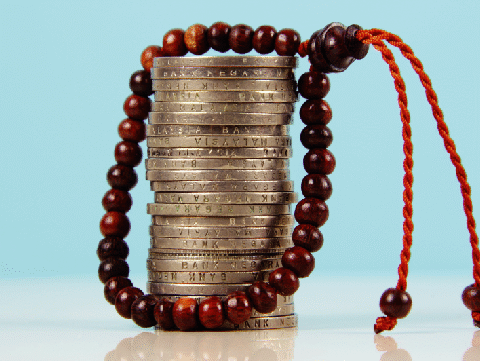We are witnessing two opposing trends: the sanctification of consumption and the transformation of the sacred into consumption. In other words, religious values and symbols are being emptied of their meaning and re-presented within the logic of consumption. After our desires and wishes, now even our values and ideals—which form the core of our identity—and the spiritual realm, humanity’s most enduring refuge, are becoming associated with consumption.
We are forced to live within this balance—unbearably difficult, deeply painful, profoundly distressing, but nonetheless real. Every era has a dominant way of thinking, an episteme, a so-called “spirit of the age” through which we try to make sense of our world. The test imposed on us by this era—with its radically different capitalist mechanisms—is part of that spirit. As children of time, which flows beyond us but also encompasses us, we spend our lives enduring this severe trial.
The most pressing questions come from three areas: technology—especially information technology; the media—particularly social media; and consumption, which is relentlessly provoked and encouraged. We are even expected to digest religion disguised as shopping or tourism. It is all deeply oppressive.
Naturally, every era has its own cognitive structure and its own exam questions tailored to that structure. People of earlier times also faced their own difficult trials. While we might complain that ours is the hardest test, we have no right to claim that the past was easier or to wish we had lived then. Instead, we must study, reflect, and ask how we can pass our test with integrity.
Each era presents its own challenges. Yet, alongside these, we as human beings—endowed with willpower and responsibility—are also given mental tools and capacities. We may call these tools “criticism and self-criticism.” Thanks to them, we have the power to continuously evaluate our experiences and choices.
That is why we often say: “We must always keep the whip of criticism and self-criticism by our side, to spur or rein in the horse of time as needed. We must honor our free will, recognize our human responsibility, understand the form that today’s test takes, and act accordingly.”
If we agree on this, let us continue our reflection on how spiritual values are changing within today’s consumer society.
Trade is good—if you know what you are giving and what you are getting.
The phenomenon of consumption has permeated every aspect of modern life. It is one of the core features that distinguishes modernity from earlier societies. When we define consumption broadly—as encompassing goods, the ways they are acquired and used, and the value systems that emerge in the process—we gain a better understanding of the society we live in. Anthropologists, cultural researchers, and many thinkers already analyze consumption in terms of its relationship with status, hierarchy, symbols, and signs.
In a consumer society, commodification settles over everything like a specter. It reduces countless services, emotions, objects, and relationships—many of which have no inherent material value—to market terms. This influence extends into the cultural realm as well: cultural values, products, and needs are now largely shaped by market dynamics.
But it doesn’t stop there. Consumer products also play a critical role in how identities are formed and perceived. Commodities now offer ready-made “self-projects” and gain cultural and social value based on how they are used. People turn to commodities again to express or display their constructed selves and identities. As a result, the consumer society has also become a society of spectacle and display.
We should openly acknowledge the profound contributions that Karl Marx and other critics of capitalism and everyday life have made to our understanding of these issues.
Since the 1960s, the concept of “lifestyle” within consumer culture has come to evoke individuality, self-expression, and having a distinct sense of style. The unraveling of traditional structures—a process that began more than a century ago with the rise of modernity—has steadily continued. As people lost their traditional identities and affiliations, they became disoriented. Through the abundance of commodities offered by the capitalist market—an abundance that both enabled and confined them—they began to construct new identities.
This process of identity construction has led to a strange and unprecedented relationship between life itself, personal being, and shopping. Such a relationship has never been seen before in any other era. Today, everything is perceived as a sign of individuality and identity: where a person sits or spends time, what they own, their mode of transportation, how they carry their body, their clothing, their speech, their actions at work or during vacation, what they eat and drink, their preferences, their means of self-expression—their style.
In today’s world, shaped by global patterns of consumption, religious life is also being transformed. It is now intertwined with other global lifestyles. As a result, it is changing, eroding in places, and yet managing to survive—often only as a subculture.
We also know that, especially in the case of Islam, religious values often clash with the meaning systems of consumer society. This naturally creates tension and conflict. The content of Islam, by its nature, constantly urges believers to reflect, to engage in criticism and self-criticism. Islam is not easily compatible with functioning as a subculture, and that incompatibility only increases the tension in a society dominated by consumer codes.
As a result, religious values and the values of consumer society—despite their deep structural differences—coexist within the same social space, and are compelled to do so. Unfortunately and inevitably, while consumption is nearly sanctified in line with the expectations of consumer culture, the sacred itself is also forced to take the form of consumption.
Let me clarify: by “the sanctification of consumption”, I refer to the excessive importance given to consumption activities and tools, and the delivery of services in a nearly magical atmosphere. Likewise, “the transformation of the sacred into consumption” refers to the hollowing out of religious values and symbols and their re-packaging within the logic of consumption.
Today, we are witnessing two parallel developments: on one hand, a growing religious awakening and the increasing visibility of religious symbols; on the other, a phenomenon that some describe as “the bourgeoisification of the religious.” At the intersection of these trends, a new phenomenon—Islamic fashion—has emerged and is reaching mass audiences.
Undoubtedly, within the bounds of what is considered Islamically acceptable, this trend invites the Islamic bourgeoisie to new modes of consumption, experiences, and excitement. For a devout individual living in a consumer society, the tension between religious values and consumer culture is far more complex than it may appear. It manifests as a deeply entangled relationship.
Those who seek to define themselves through servitude to God inevitably find themselves—whether consciously or not—competing to acquire the symbolic value attached to brands. Sadly, similar contradictions can also be observed in how Hajj and Umrah are practiced today. Even in these sacred rituals, the impact of commodification and consumer habits on religious values has become increasingly visible.
The insights of Mücahid Pişkin have played a key role in shaping the thought process and sentence structure of this text. His article, titled “Religion and Religious Values in the Consumer Society: The Case of Luxury Hajj and Umrah”, published in the journal Human and Society, provides an exceptional perspective for all of us.
What makes his work important is that it exemplifies how a topic often consumed recklessly and aggressively in the media can be treated with depth and academic rigor. Indeed, the real solutions will not emerge from the noise and confrontations of media personalities, but from the kind of scholarly efforts that deserve to be valued—not wasted.
In facing today’s test, I place my hope in young academics—not only for the support they can offer us, but also for the guidance they may provide to a world in spiritual crisis. Their qualified contributions could offer crucial opportunities to reactivate our potential for criticism and self-criticism.






